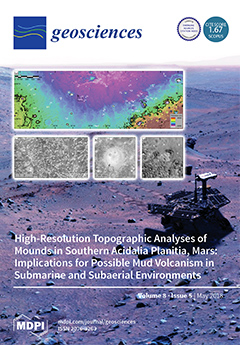The limitation in quantity and quality of climate data, in particular rainfall measurements, directly affects the reliability of hydrological models, which negatively impacts on the quality of water resources planning and management. This is obviously true in poorly-gauged or in transboundary river catchments
[...] Read more.
The limitation in quantity and quality of climate data, in particular rainfall measurements, directly affects the reliability of hydrological models, which negatively impacts on the quality of water resources planning and management. This is obviously true in poorly-gauged or in transboundary river catchments with limited practice of data sharing among the riparian states. Satellite-based and reanalysis rainfall products are increasingly recognised as a promising information source to supplement ground observations. This research aims to study the feasibility of using satellite-based and reanalysis rainfall data for rainfall-runoff modelling in the Sre Pok catchment-a poorly gauged catchment located in Vietnam and Cambodia. First, three selected rainfall products (Tropical Rainfall Measuring Mission-TRMM, CPC MORPHing Technique-CMORPH, and European Reanalysis-ERA-Interim) were compared against ground rainfall data of 13 rain-gauges, located inside and in the vicinity of the study catchment. The validation results show that the studied global datasets have a reasonably good correlation with ground observation at monthly time scale (NSE = 0.3 to 0.8, R
2 = 0.4 to 0.8), but relatively poor correlation at daily scale (NSE = −0.4 to 0.3, R
2 = 0.1 to 0.4). Next, a semi-distributed rainfall-runoff model based on HBV-Light was developed to validate these datasets in the Krong Ana sub-catchment of the Sre Pok. The results illustrate satisfactory to very good model performances at monthly time scale for the satellite-based and reanalysis rainfall inputs (NSE = 0.58 to 0.77, R
2 = 0.59 to 0.78 for the calibration period from 2004 to 2007, while NSE = 0.59 to 0.80, R
2 = 0.64 to 0.84 for the validation period from 2008 to 2010). However, only TRMM and ERA-Interim give acceptable results at daily scale with NSE = 0.52 to 0.67, R
2 = 0.53 to 0.67 for the calibration period, and NSE = 0.41 to 0.61, R
2 = 0.45 to 0.65 for the validation period. The study concludes that the tested satellite-based and reanalysis rainfall products, especially TRMM and ERA-Interim, could mimic reasonably well the monthly rainfall pattern in the study region. It also demonstrates a great opportunity to use satellite-based and reanalysis rainfall for runoff modelling at monthly time scale in the Sre Pok catchment and other poorly-gauged (transboundary) catchments in the region, for example in the Mekong and Red River Basins.
Full article





